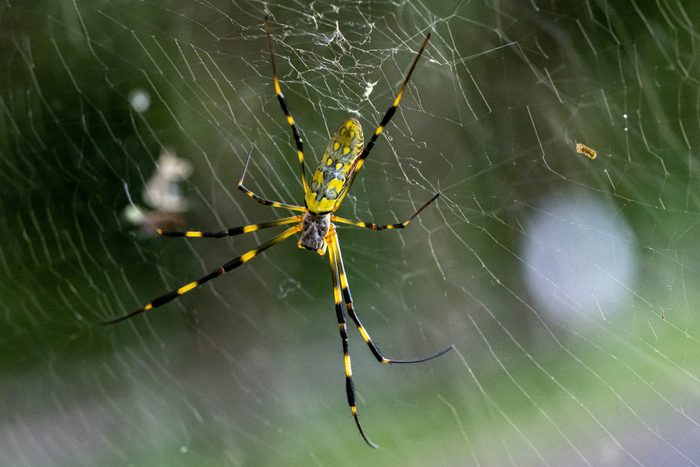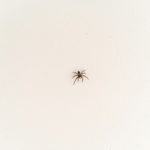An Invasive Spider Species Is Spreading Across the U.S.

Sure, the jorō spider looks big and scary, but its broadening existence in the U.S. may not be as bad as you think. Get the lowdown on this arachnid.
Almost a decade ago, the jorō spider arrived in the Southeastern U.S. with little fanfare. Recently, however, this spider‘s story has gone viral, told on local TV newscasts and the Today Show and spread through social media.
Dr. Andrew Davis and graduate student Benjamin Frick, ecologists from the University of Georgia, sparked the attention with their study of the jorō, which suggested the spider is migrating northward. The jorō’s giant size, ability to balloon through the wind and build webs roughly the width of a Mack truck helped fuel the fascination.
Here’s what you need to know about this invasive spider.
On This Page
What Is a Jorō Spider?
It’s an arachnid belonging to the Trichonephila family of spiders. E. Richard Hoebeke, associate curator at the UGA Collection of Arthropods, Georgia Museum of Natural History, says the jorō is endemic to southeast Asia, most commonly in China, Japan, Korea, Taiwan, Vietnam and India.
As with many invasive species, it’s believed the jorō made its way across the ocean on container ships or cargo planes. Domestically, they can hitch a ride on the bottom of a car or tuck themselves snugly inside a suitcase, potentially spreading near and far.
The University of Georgia study’s research suggests the jorō’s high metabolism and heart rates, along with their ability to tolerate frostier conditions, aided its migration northward.
What Does a Jorō Spider Look Like?
According to Matthew H. Persons, a behavioral ecologist and professor of biology at Susquehanna University who studied spiders for more than 30 years, the jorō spider is easily identifiable by its size (it can stretch up to three inches across) and gold-colored silk.
“The yellow body and bluish-green stripes and red make it fairly distinctive as well,” Persons says.
Is the Jorō Spider Poisonous?
All spiders are venomous, Hoebeke says, but not all are poisonous. “They use that venom to subdue their prey,” he says. “I do not consider the jorō spider poisonous, but I am aware of a few reported incidences of a jorō biting a human.”
Even so, the jorō is considered less aggressive than many spiders half their size, and harmless to humans and pets. Even if one were to bite you — which is unlikely — their fangs are not long enough to deeply pierce the skin.
Persons believes the frequency of spider bites has been grossly overstated. “As someone who has handled well over 50,000 spiders in my life, I’ve been bitten exactly once,” he says. “And it was specifically to demonstrate how hard it is to get a spider to bite.”
How Does a Jorō Spider Impact My Yard and Garden?
They’re actually good for them. Jorōs are great predators of the insects humans often cannot tolerate, such as mosquitoes, stink bugs and other exotic pests. “I personally have seen stink bugs, bees, wasps, butterflies, cicadas, grasshoppers and lady beetles captured in their webs,” Hoebeke says.
Just keep a lookout so you can avoid accidentally walking into the giant golden-yellow webs.
How To Get Rid of Jorō Spiders
Although further research is needed, experts believe there’s no reason to kill a jorō spider that has taken up residence in your yard or garden. What’s more, killing them could present a challenge.
“Many web-building spiders are difficult to get rid of since they remain suspended in a web, and often away from pesticide-sprayed surfaces, unless you are spraying them directly,” Persons says.
Hoebeke agrees the exercise will likely prove futile. “Don’t waste your time trying to kill them, because they will come back,” he says.
How To Prevent Jorō Spiders
One potential way is by removing their food source. But that’s easier said than done, given the variety of bugs commonly found throughout gardens and yards. As the population continues to broaden, there doesn’t seem to be any way to stop the jorō spider.
“We need to learn to live with them,” Hoebeke says. “Since it is beneficial in that it feeds on other arthropods, I say simply leave them alone.”



